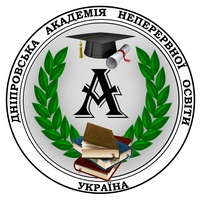APPLICATION OF MATHEMATICAL MODELING METHODS IN THE MANAGEMENT OF TERRITORIAL COMMUNITIES
Abstract
The article considers the expediency of using mathematical modeling methods in the management of territorial communities. It was revealed that during the years of administrative reform, domestic scientists, conducting research in various aspects of the management of territorial communities, emphasize the use of information and communication technologies, and do not pay enough attention to the possibility of using mathematical modeling methods to improve decision-making processes, optimize the distribution of resources, and analyze economic efficiency and territorial development planning. It was determined that one of the most urgent tasks for local self-government bodies in Ukraine is the optimization of the network of secondary schools, as this is an important component of the concept of the New Ukrainian School, according to which the formation of a network of specialized education institutions was foreseen no later than 2025. Local self-government bodies, as founders of educational institutions, can use mathematical modeling methods, which will help analyze and forecast the demographic situation, socio-economic conditions of the community. It was concluded that the future accession of Ukraine to the European Union requires the renewal of management methods at the local level, which occurs in parallel with the decentralization reform, that is, the transfer of powers from central to local authorities. Effective management of the educational sphere at the level of territorial communities is especially important. Mathematical modeling in this context becomes an indispensable tool that allows analyzing, forecasting and optimizing various aspects of their activities. In particular, economic models are used to analyze economic processes in communities, social models are used to predict demographic trends, and optimization models are used to find optimal solutions in various areas of management. In particular, they can be applied to optimize the educational network, which becomes an important task in the context of education reform.
References
2. Брожик Л. Інформаційні технології та ефективність державного управління. Персонал. 2007. № 8. С. 81–84.
3. Євсюкова О. В. Цифрова спроможність територіальних громад в Україні: проблеми та перспективи. Державне управління: удосконалення та розвиток, 2021, № 6 URL: http://www.dy.nayka.com.ua/pdf/6_2021/3.pdf (дата звернення: 29.03.2024)
4. Закону України «Про освіту» від 5 вересня 2017 року № 2145-VIII URL: https://zakon.rada.gov.ua/laws/show/2145-19#Text (дата звернення: 26.04.2024).
5. Інформаційне повідомлення про громадське обговорення проектів рішень Піщанської селищної ради про ліквідацію закладів загальної середньої освіти (станом на 16 квітня 2024 року) URL: https://ps-gromada.gov.ua/news/1713265710/ (дата звернення: 26.04.2024).
6. Концепція «Нова українська школа». URL: https://mon.gov.ua/storage/app/media/zagalna%20serednya/nova-ukrainska-shkola-compressed.pdf (дата звернення: 29.03.2024)
7. Концепція реформування місцевого самоврядування та територіальної організації влади в Україні: Рішення Кабінету Міністрів України № 333‑р, 01.04.2014 р. URL: https://zakon.rada.gov.ua/laws/show/333-2014-%D1%80. (дата звернення: 26.04.2024).
8. Ліпінська А. В. Інформаційно-комунікаційні технології в організації інформаційно-аналітичного забезпечення державного управління. Державне управління: удосконалення та розвиток. 2015. № 10 URL: http://www.dy.nayka.com.ua/?op=1&z=908 (дата звернення: 26.04.2024).
9. Нижник Н. Р., Леліков Г. І. Інформаційні технології в структурах державної служби: навчальний посібник. Київ: Центр навчальної літератури, 2015. 220 с.
10. Попов С. А., Панченко Г. О. Інноваційний розвиток системи органів публічної влади: стратегічний підхід: навчальний посібник. Одеса: ОРІДУ НАДУ, 2018. 220 с.
11. Реформа децентралізації. Кабінет міністрів України. URL: https://www.kmu.gov.ua/reformi/efektivne-vryaduvannya/reforma-decentralizaciyi (дата звернення: 26.04.2024).

 ISSN
ISSN  ISSN
ISSN 

